“If you mess up indoors, everything is magnified,” says Sarah Taber.
Taber is an independent food safety consultant specializing in indoor farming. Previously she served as director of food safety for The Aquaponics Association after earning a Doctorate of Plant Medicine. At the association, she saw startups pitch to investors a risk-free way of farming, and that’s where the worrying began, says Taber.
Since then she has worked with half a dozen hydroponic indoor farming operations of various sizes, funding sources, and technologies and her early worries are now full-blown concerns about the safety of the food grown on indoor farming for consumers. And with food safety scandals increasingly hitting the headlines — just last month thousands of pounds of romaine lettuce were recalled when 200 people became ill and five died — it’s time some indoor ag players stopped being “way too complacent” and woke up to the dangers, says Taber. (She chose not to name the farms due to non-disclosure agreements.)
Often called controlled environment agriculture (CEA), indoor farming is not new. Commercial greenhouses have been around since the 1920s, but in the last few years, CEA startups have started to raise large amounts of funding for high tech farming operations, often in urban areas. The basic formula is a controlled environment — where the temperature and ventilation can be controlled — soilless growing, using some form off hydroponics system, and in some cases, artificial light from specially designed LEDs. The promises of these farms are many: decrease the distance food must travel from farm to table, use less water and fewer agrochemicals, grow seasonal items all year round and in climates where it otherwise would not be possible.
Controlling every variable from temperature to humidity to plant nutrition while using artificial light perfectly calibrated for each plant is a pitch that has obviously sparked the imagination of the public and investors when you look at the more than $300 million invested in the space last year. And it can be very good business. Just ask the Netherlands, which is second only to the US in food exports despite having 270 times less landmass thanks to its prolific CEA industry.
But a controlled environment does not automatically mean produce is exempt from food safety issues. And with investor appetite for big-ticket, high-tech indoor farms growing, particularly in the US, the sector is full of relatively new players growing plants and businesses very quickly — many spreading the idea that indoor farms are plant factories where the outcome is as assured as a Detroit auto assembly line.
The proclaimed dominance of technology over biology by this category of entrepreneurs has left some food safety experts concerned that consumers could be getting the wrong idea and startups may be drinking their own kool-aid.
“As a consultant, a lot of my time is spent grief counseling people over the loss of the innocence they had when they thought that food safety wasn’t a problem [indoors],” says Taber. “When you’re outside you have air circulation and sunlight that can brush back some of your mistakes. Temperature and humidity can get out of control indoors in a way it can’t outdoors and that can grow bacteria,” she continues.
What’s the risk? People and a lack of vigilance
It’s true; growing indoors inside a building or other structure can protect plants from contamination from above, like bird droppings and chemical drift. Isolated from other farming operations also means that the plants are safe from the inadvertent spreading of agrochemicals or animal waste — major causes of salmonella and e. coli contamination in outdoor farming.
But, based on currently available CEA technology, indoor farmers are not immune to other food safety challenges, says Jeff Brandenburg. Vigilance is still very much needed.
Brandenburg is president of the JSB Group, a Massachusetts-based consultancy for every link in the produce supply chain. He has a masters degree in food safety and teaches good agricultural practices at various universities including UC Davis. He says that local farming, no matter the growing method, is often perceived as safer, not just by the public, but by the growers.
“You get these greenhouses and high tech operations that don’t have a fundamental understanding of food safety and how it works, and they think that it’s not their problem because of how their farms are built; that’s a problem,” says Brandenburg. “It might be slightly safer because you’re in a more controlled environment, but if that controlled environment gets out of control, then you’ve got a big problem. Bacteria is not biased. It doesn’t grow more on the west coast than it does on the east coast,” he adds.
All of the experts consulted for this report emphasized that people are the number one source of food safety problems in indoor farming. People bring in bacteria on clothes, shoes, and skin. With proper controls such as hairnets, face masks, foot baths, single-use or clean suits, the risk can be mitigated, but there is still plenty of room for error and these practices are not commonplace all over the industry.
Though eventual automation is part of the promise of the major indoor farming technology companies, it hasn’t become a reality in any meaningful way yet, so there are still a lot of people involved.
“Everybody’s talking about automation, but nobody is actually doing it, so there’s a huge amount of contact from workers. That’s the same as outdoor farming,” says Taber.
How is all this monitored?
The food safety of most commercial farms, indoor or outdoor, is monitored through audits and certifications where an outside body verifies that food safety practices and preventative measures are being carried out over varying lengths of time — sometimes several hours, sometimes several days.
The government body that oversees foods safety in the US is the Food and Drug Administration (FDA), but historically they have played a larger role in the aftermath of an outbreak than in its prevention.
The real pressure to keep up standards (other than the honest and genuine desire not to hurt people) comes from retailers that often require audits before they take on a new vendor and increasingly send their own auditors directly to farms.
The most stringent and widely-recognized family of audits are under the umbrella of the Global Food Safety Initiative (GFSI), which was established by the industry in 2000 to reduce food safety risks and streamline the audit process in an effort to lower costs for operators while improving overall food safety. GFSI certifications include Primus GFS Food Safety Management Systems, Global Good Agricultural Practices (GAP), Canada GAP, and Hazard Analysis Critical Control Points — HACCP, and SQF – considered to be the most stringent audit of the group.
The USDA also offers a Good Agricultural Practices audit, which experts say is less stringent than the GFSI certifications, but is accepted by some retailers.
Venture-backed certifications
We asked some of the major venture-backed US indoor farms what certifications they had achieved. https://www.brightfarms.com/ and Bowery Farming both have SQF certifications. Plenty and Gotham Greens are both GFSI GAP certified (Gotham Greens manufacturing facilities for pesto and other products are comparably certified) and AeroFarms is USDA GAP certified.
A lack of advanced certifications does not necessarily mean that the practices required to pass such an audit are not in place, say several farmers consulted for this report. Farms often build their food safety capacity over time and only go through the time and expense of an audit when processes are finalized and unlikely to change.
Paul Lightfoot, CEO of Bright Farms, a hydroponic grower with four farms in four different US states, said that his company only underwent an SQF audit for each of its farms when the design of their farm was finalized and ready to be replicated in all new locations without alteration.
As many of the venture-backed farms are still iterating their technology, advanced certifications may be less likely, but food safety experts pointed out that one thing that makes high food safety standards much easier to achieve is ample funding.
“I don’t think the type of capital matters. I do think an insufficient amount of it might make a difference. Food safety requires investment. It changes the design of your facility. Its changes how you staff your facility,” says Lightfoot.
But funding is also no guarantee according to Brandenburg, “I’ve worked with a couple of startup operations that were venture capital-backed and the people had wonderful intentions, but knew nothing about the agricultural world. There’s a feeling of how hard can it be?”
On top of audits, farms are also subject to Food and Drug Administration regulation, most importantly the Food Safety Modernization Act (FSMA) — a newly enacted policy that is intended to give the administration better tools for preventing outbreaks rather than simply responding to them.
The first compliance date for the FSMA Produce Rule was January 26, 2018, and farms with annual sales over $500,000 are affected.
The new rule establishes protocols for how produce farmers harvest, wash, package, and store fruits and vegetables usually consumed raw. Standards for microbial water quality, biological soil amendments, managing livestock and wild animals, health and hygiene, and equipment, tools and building make up the majority of the law.
Some experts doubt whether the rule will reduce instances of food-borne illness in a meaningful way, and many small-scale farmers worry about the costs of coming into compliance.
“In the past it could be a dusty binder sitting on a shelf and when you think you’re going up for an audit you just backfill in information, which is really problematic,” says Allison Kopf, CEO of Agrilyst, a farm management software platform and app for indoor growers. She says that though many farms were ready for FSMA, some used it as on opportunity to digitize some very analogue systems of food safety control.
She adds that farmers have a real fear of hurting people and they want regulation that will actually help with that. What they don’t want is regulation that will add to their workload without helping with that.
The CEA Food Safety Coalition
Indoor farming executives speak about the possibility of a food borne illness stemming from the industry with palpable fear. In order to allay that fear, they’re teaming up – a big deal for an industry laser-focused on proving and registering unique intellectual property.
Next week a group of indoor farming companies will meet at the United Fresh FreshTEC trade show in Chicago to hash out details of a new organization: the Controlled Environment Agriculture Food Safety Coalition.
The group is the brainchild of Lightfoot and counts AeroFarms and Massachusetts hydroponic farm Little Leaf Farms as founding members. Eleven other indoor farms have expressed interest.
Lightfoot said the idea was inspired by the recent romaine lettuce scandal. Bright Farms went though its own scare in the Fall of 2017 when it voluntarily recalled all of its products from four midwest supermarket chains for potential e. coli risk. No illnesses were reported.
Now the former software executive is working to spread the idea that food safety best practices should never be proprietary, with the knowledge that if one farm has a major food safety incident, all players in this young industry could feel the pain.
The goals of the coalition, according to Lightfoot, are to develop guidelines on food safety and protocols specific to indoor farming; to create a list of resources for coalition members; to establish a board of advisors to help members navigate food safety incidents; to build website to educate growers and address the public when needed.
But a lot is still yet to be decided before the work can even begin. At the conference in Chicago, the farms that have so far shown interest will meet to elect a steering committee. Eventually there may be a certain food safety certification requirement to join, but currently its open to all comers.
And while the industry is hoping and working to never see a major outbreak, Taber says that the outbreaks are the best teachers despite their sometimes tragic results.
“When you get down to it, the way people learn about fallibility, and that you can fail even if you didn’t mean to, is by seeing it happen. folks in the ag industry may not have had an outbreak on their farm, but they know someone its happened to. For them it is real.”

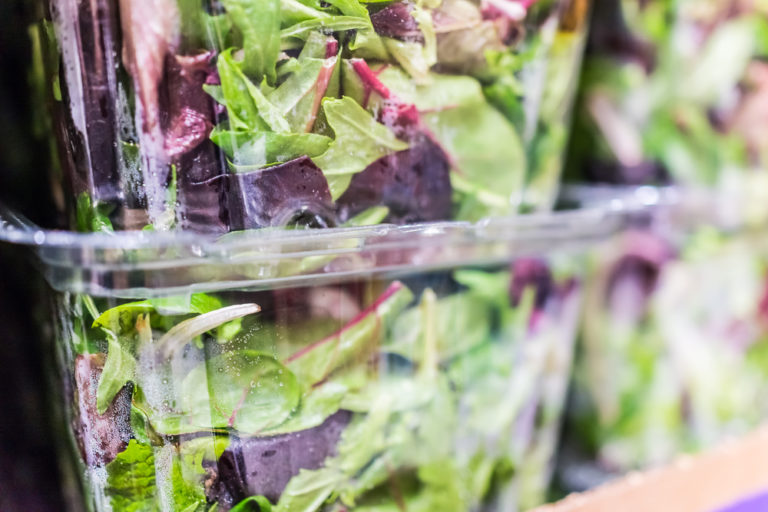
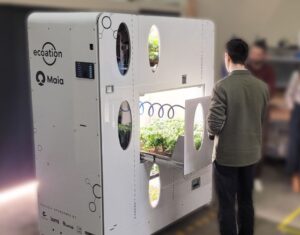
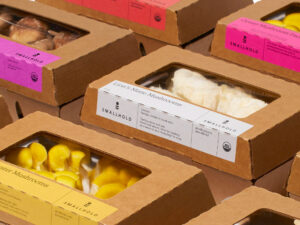
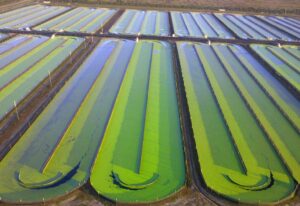
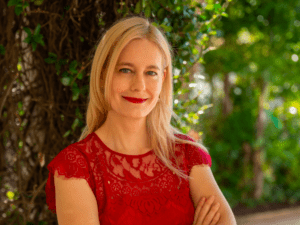




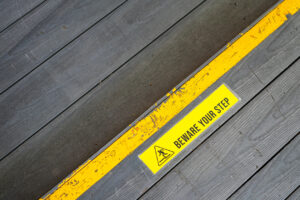

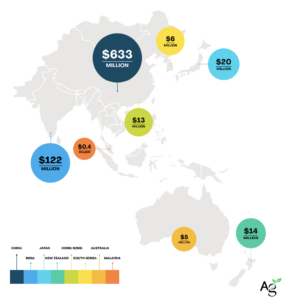



Sponsored
International Fresh Produce Association launches year 3 of its produce accelerator